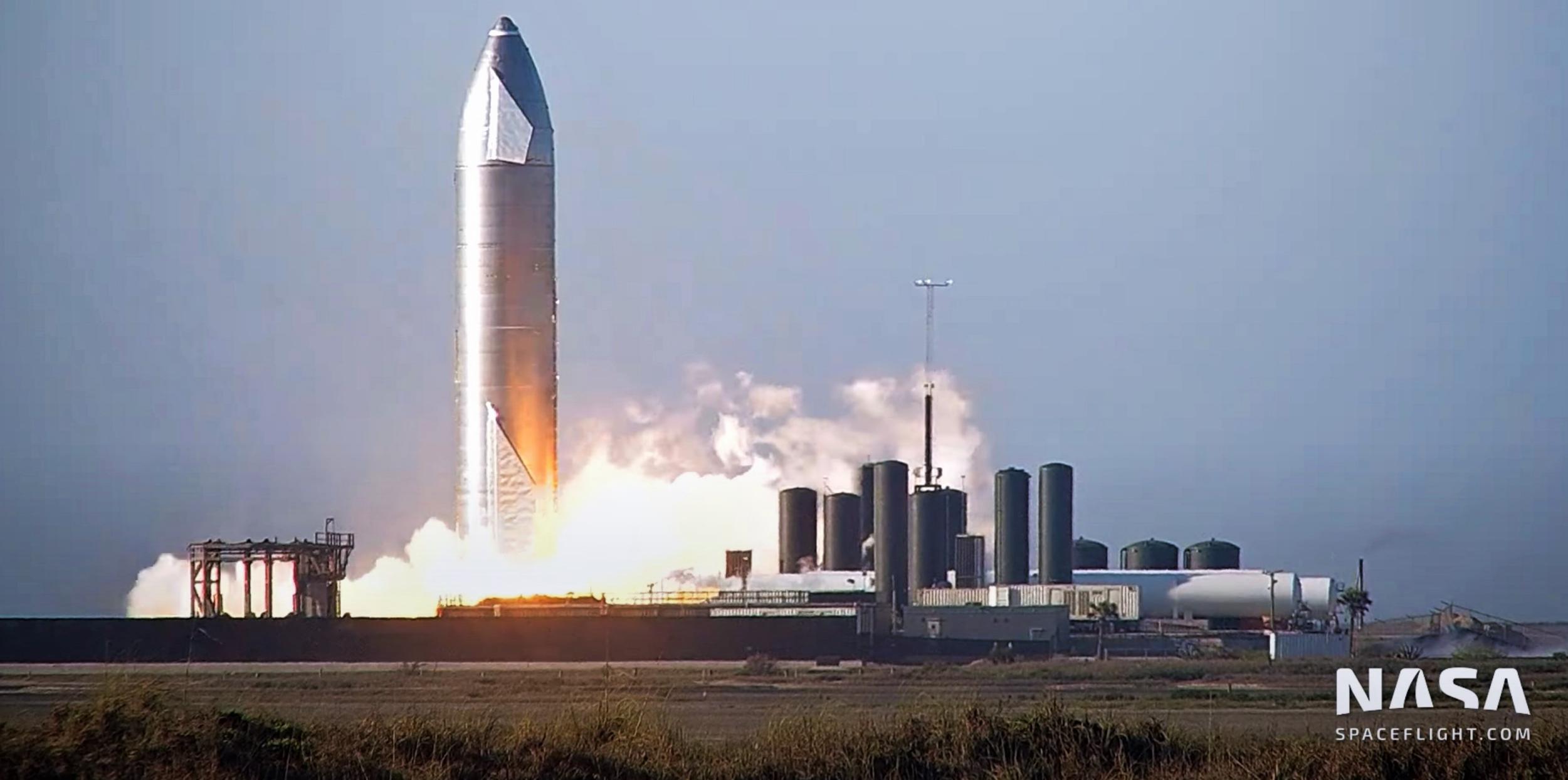
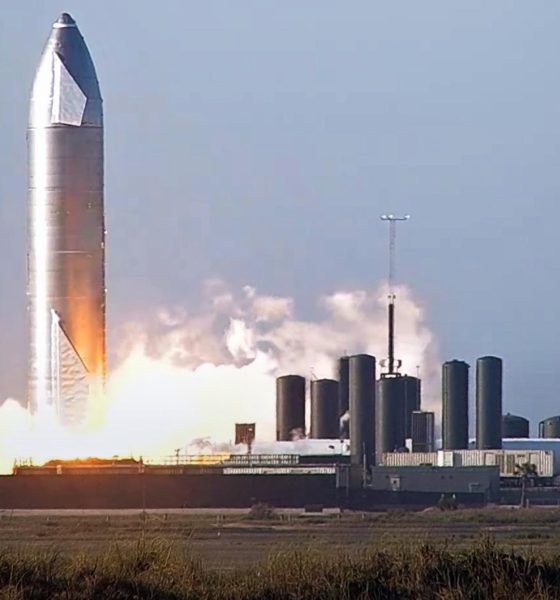
News
SpaceX aces Starship static fire days after NASA astronaut visit
Update: Around 9am CDT (UTC-5), SpaceX successfully fired up Starship serial number 11’s (SN11) three Raptor engines, completing the static fire test on the first try of the day and just two hours into in Monday’s eight-hour window.
As far as three-engine Starship static fires go, SN11’s Monday test was about as smooth and clean as they come, boding extremely well for a launch attempt as early as either Tuesday or Wednesday, according to Temporary Flight Restrictions (TFRs) filed with the FAA. With flight termination system (FTS) explosive charges already installed and an FAA license in hand, all that stands between Starship SN11 and flight is a deeper static fire review and the cooperation of local weather conditions. Stay tuned for updates!
A group of NASA astronauts appear to have taken an agency-sanctioned trip down to SpaceX’s Boca Chica Starship facilities, including a visit with a prototype scheduled to fire up and launch as early as this week.
Seemingly in lockstep with the accelerating pace of Starship production and testing, the frequency of NASA astronaut visits to SpaceX’s South Texas facilities has also seen an uptick over the last six or so months.
Back in 2019, SpaceX built Starhopper, performed numerous tests with early Raptor engine prototypes, and performed two untethered hops. With that success in hand, SpaceX turned its focus to Starship Mk1 and suffered an almost immediate failure during pressure testing, encouraging a series of rapid manufacturing upgrades largely completed in just a few months’ time.
In 2020, SpaceX pushed those new facilities to the limits while continuing major expansions. In 12 months, SpaceX built and tested five small ‘test tanks’ and six full Starship tank sections, performed almost a dozen Raptor static fires with that hardware, hopped two of those tanks (SN5 & SN6) to 150m, fully integrated the first full-height Starship (SN8), and nearly landed that vehicle after an otherwise flawless 12.5 km (7.8 mi) launch and descent.
Back in 2019, NASA inked its first monetary Starship contract with SpaceX, awarding $3M to prototype a coupling mechanism Starships will need to dock and refuel in space. In April 2020, NASA revealed that SpaceX – with its Starship launch vehicle – was one of three finalists selected to compete for a Human Landing System (HLS) Moon lander contract, providing the company $135M of the full $970M award to begin preliminary design and certification work.
Around five months later, a group of NASA astronauts made their first public visit to SpaceX’s Starship development hub in South Texas, overflying the factory and launch pad in training jets on a routine sortie out of Houston and Johnson Space Center. Days later, SpaceX won a $53M NASA “Tipping Point” contract to demonstrate large-scale cryogenic propellant transfer with a Starship prototype.
Ultimately, excluding rock-solid commercial crew and cargo partnerships, NASA’s relationship with SpaceX and the company’s Starship appears to be growing stronger every day. While it’s hard to say just how indicative of that growth the visible attention of NASA’s astronaut corps is, it’s worth taking note of what those same astronauts aren’t (publicly) overflying, visiting, and touring – namely factories, R&D facilities, or prototype hardware of HLS competitors Dynetics and Blue Origin.
Delayed by about a week, SpaceX is currently preparing to fire up its fourth full-size Starship prototype – SN11 – for the first time as early as Monday, March 22nd, 19 days after Starship SN10 briefly landed in one piece. SpaceX has filed temporary flight restrictions (TFRs) with the FAA for SN11’s 10 km (6.2 mi) launch debut from Tuesday through Friday, leaving plenty of opportunities for a launch this week if the rocket can successfully test its three Raptor engines by Wednesday.

News
Tesla is improving Giga Berlin’s free “Giga Train” service for employees
With this initiative, Tesla aims to boost the number of Gigafactory Berlin employees commuting by rail while keeping the shuttle free for all riders.
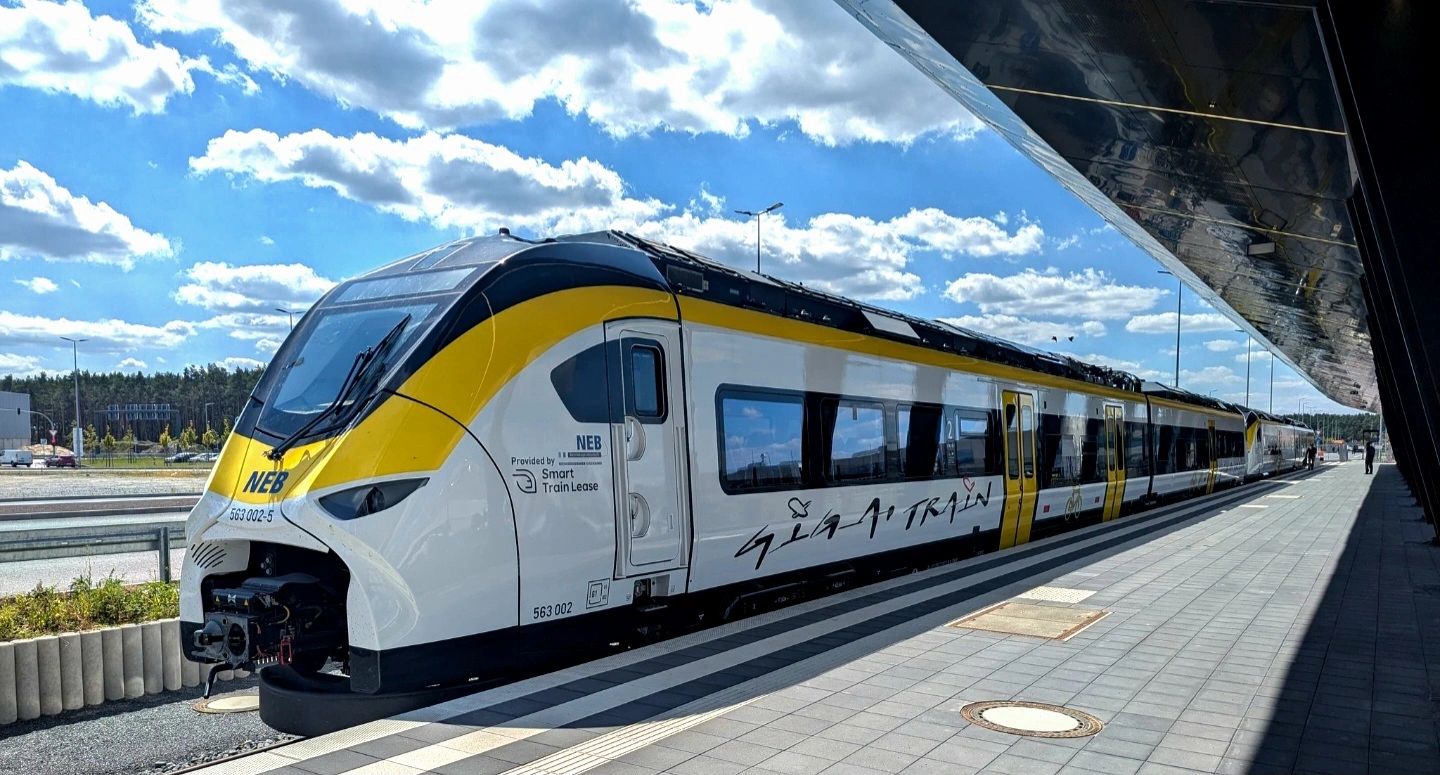
Tesla will expand its factory shuttle service in Germany beginning January 4, adding direct rail trips from Berlin Ostbahnhof to Giga Berlin-Brandenburg in Grünheide.
With this initiative, Tesla aims to boost the number of Gigafactory Berlin employees commuting by rail while keeping the shuttle free for all riders.
New shuttle route
As noted in a report from rbb24, the updated service, which will start January 4, will run between the Berlin Ostbahnhof East Station and the Erkner Station at the Gigafactory Berlin complex. Tesla stated that the timetable mirrors shift changes for the facility’s employees, and similar to before, the service will be completely free. The train will offer six direct trips per day as well.
“The service includes six daily trips, which also cover our shift times. The trains will run between Berlin Ostbahnhof (with a stop at Ostkreuz) and Erkner station to the Gigafactory,” Tesla Germany stated.
Even with construction continuing at Fangschleuse and Köpenick stations, the company said the route has been optimized to maintain a predictable 35-minute travel time. The update follows earlier phases of Tesla’s “Giga Train” program, which initially connected Erkner to the factory grounds before expanding to Berlin-Lichtenberg.
Tesla pushes for majority rail commuting
Tesla began production at Grünheide in March 2022, and the factory’s workforce has since grown to around 11,500 employees, with an estimated 60% commuting from Berlin. The facility produces the Model Y, Tesla’s best-selling vehicle, for both Germany and other territories.
The company has repeatedly emphasized its goal of having more than half its staff use public transportation rather than cars, positioning the shuttle as a key part of that initiative. In keeping with the factory’s sustainability focus, Tesla continues to allow even non-employees to ride the shuttle free of charge, making it a broader mobility option for the area.
News
Tesla Model 3 and Model Y dominate China’s real-world efficiency tests
The Tesla Model 3 posted 20.8 kWh/100 km while the Model Y followed closely at 21.8 kWh/100 km.
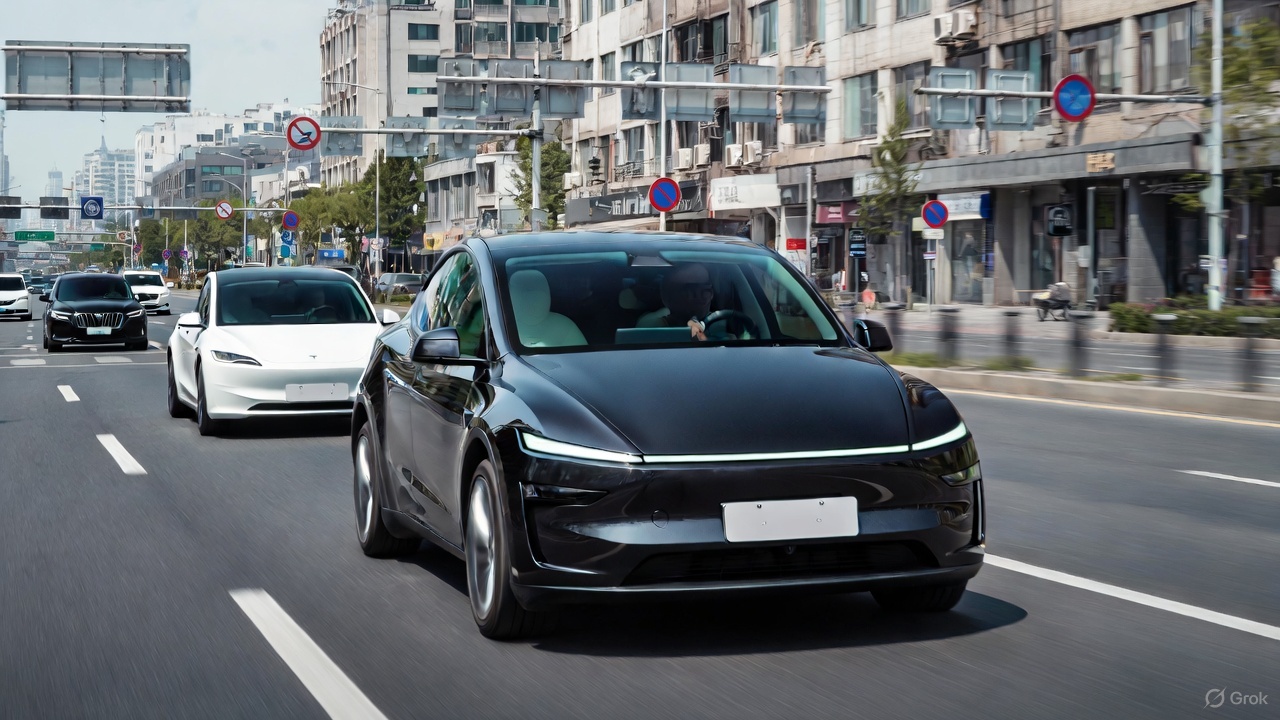
Tesla’s Model 3 and Model Y once again led the field in a new real-world energy-consumption test conducted by China’s Autohome, outperforming numerous rival electric vehicles in controlled conditions.
The results, which placed both Teslas in the top two spots, prompted Xiaomi CEO Lei Jun to acknowledge Tesla’s efficiency advantage while noting that his company’s vehicles will continue refining its own models to close the gap.
Tesla secures top efficiency results
Autohome’s evaluation placed all vehicles under identical conditions, such as a full 375-kg load, cabin temperature fixed at 24°C on automatic climate control, and a steady cruising speed of 120 km/h. In this environment, the Tesla Model 3 posted 20.8 kWh/100 km while the Model Y followed closely at 21.8 kWh/100 km, as noted in a Sina News report.
These figures positioned Tesla’s vehicles firmly at the top of the ranking and highlighted their continued leadership in long-range efficiency. The test also highlighted how drivetrain optimization, software management, and aerodynamic profiles remain key differentiators in high-speed, cold-weather scenarios where many electric cars struggle to maintain low consumption.
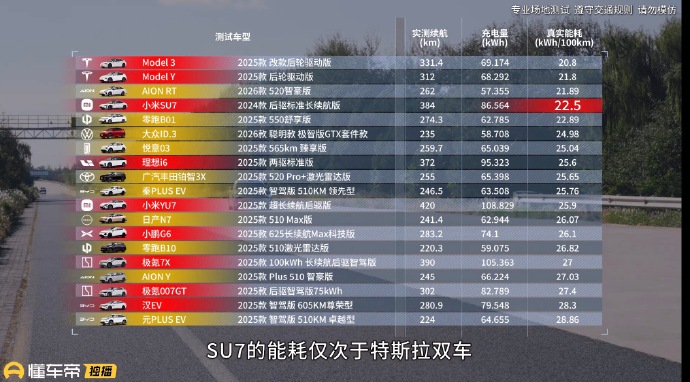
Xiaomi’s Lei Jun pledges to continue learning from Tesla
Following the results, Xiaomi CEO Lei Jun noted that the Xiaomi SU7 actually performed well overall but naturally consumed more energy due to its larger C-segment footprint and higher specification. He reiterated that factors such as size and weight contributed to the difference in real-world consumption compared to Tesla. Still, the executive noted that Xiaomi will continue to learn from the veteran EV maker.
“The Xiaomi SU7’s energy consumption performance is also very good; you can take a closer look. The fact that its test results are weaker than Tesla’s is partly due to objective reasons: the Xiaomi SU7 is a C-segment car, larger and with higher specifications, making it heavier and naturally increasing energy consumption. Of course, we will continue to learn from Tesla and further optimize its energy consumption performance!” Lei Jun wrote in a post on Weibo.
Lei Jun has repeatedly described Tesla as the global benchmark for EV efficiency, previously stating that Xiaomi may require three to five years to match its leadership. He has also been very supportive of FSD, even testing the system in the United States.
Elon Musk
Elon Musk reveals what will make Optimus’ ridiculous production targets feasible
Musk recent post suggests that Tesla has a plan to attain Optimus’ production goals.
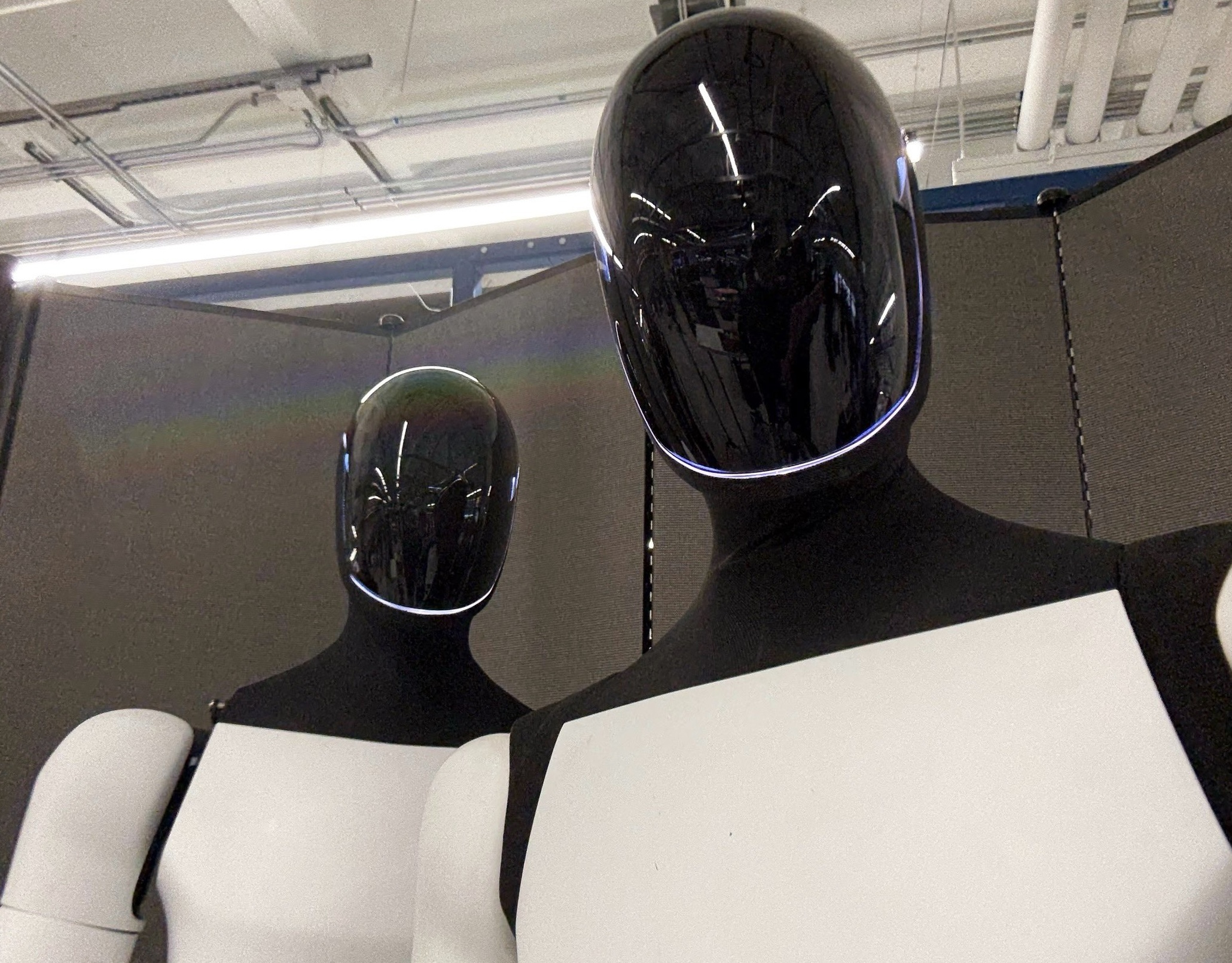
Elon Musk subtly teased Tesla’s strategy to achieve Optimus’ insane production volume targets. The CEO has shared his predictions about Optimus’ volume, and they are so ambitious that one would mistake them for science fiction.
Musk’s recent post on X, however, suggests that Tesla has a plan to attain Optimus’ production goals.
The highest volume product
Elon Musk has been pretty clear about the idea of Optimus being Tesla’s highest-volume product. During the Tesla 2025 Annual Shareholder Meeting, Musk stated that the humanoid robot will see “the fastest production ramp of any product of any large complex manufactured product ever,” starting with a one-million-per-year line at the Fremont Factory.
Following this, Musk stated that Giga Texas will receive a 10 million-per-year unit Optimus line. But even at this level, the Optimus ramp is just beginning, as the production of the humanoid robot will only accelerate from there. At some point, the CEO stated that a Mars location could even have a 100 million-unit-per-year production line, resulting in up to a billion Optimus robots being produced per year.
Self-replication is key
During the weekend, Musk posted a short message that hinted at Tesla’s Optimus strategy. “Optimus will be the Von Neumann probe,” the CEO wrote in his post. This short comment suggests that Tesla will not be relying on traditional production systems to make Optimus. The company probably won’t even hire humans to produce the humanoid robot at one point. Instead, Optimus robots could simply produce other Optimus robots, allowing them to self-replicate.
The Von Neumann is a hypothetical self-replicating spacecraft proposed by the mathematician and physicist John von Neumann in the 1940s–1950s. The hypothetical machine in the concept would be able to travel to a new star system or location, land, mine, and extract raw materials from planets, asteroids, and moons as needed, use those materials to manufacture copies of itself, and launch the new copies toward other star systems.
If Optimus could pull off this ambitious target, the humanoid robot would indeed be the highest volume product ever created. It could, as Musk predicted, really change the world.









